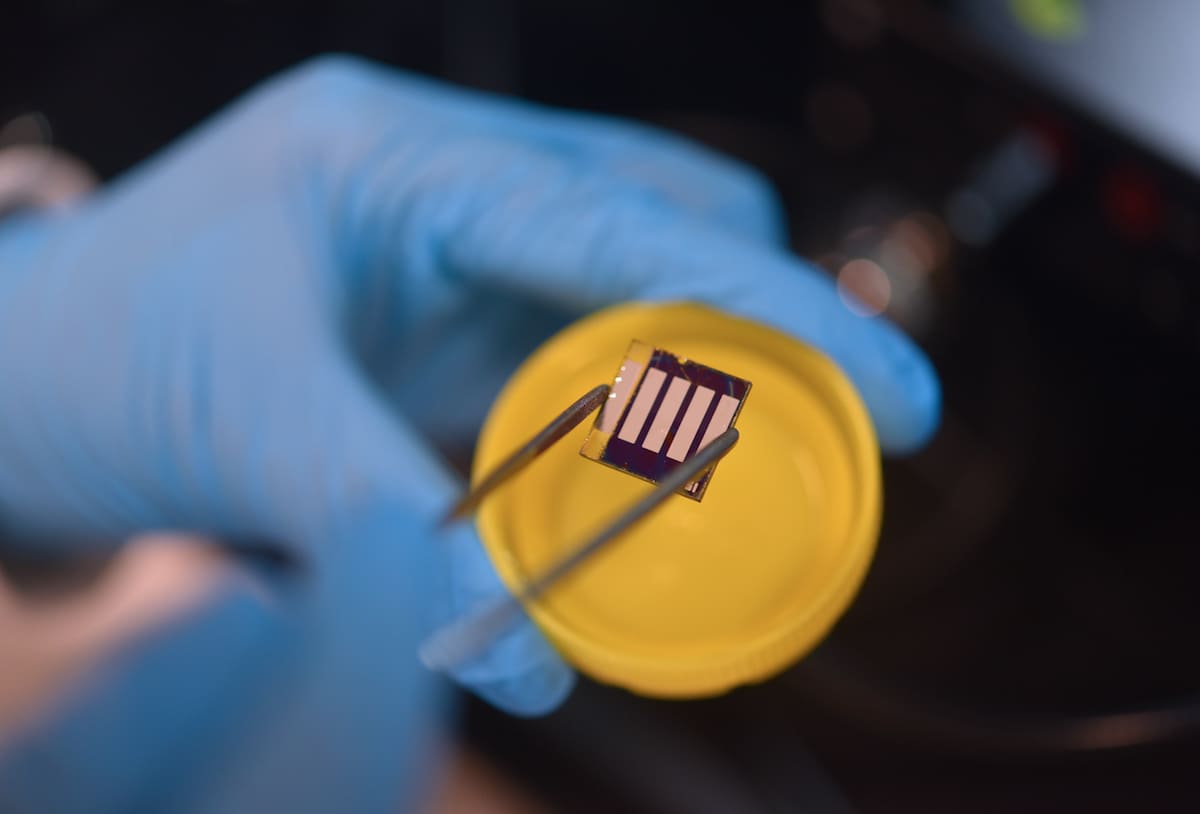
A new global milestone has been reached in solar technology thanks to tin halide perovskites. A research team from the University of Queensland has developed a solar cell that converts light into electricity with a certified record efficiency of 16.65%. This is the highest value ever achieved for this specific class of materials.
Until now, most breakthroughs in perovskite photovoltaics have relied on lead-based metal halide compounds. However, lead poses serious environmental and health risks, both during manufacturing and at the end of the product’s lifecycle.
Tin halide perovskites: challenges and solutions
Tin emerged early on as a more sustainable alternative to lead, but it came with a significant trade-off in performance. The issue lies in the complex chemistry of the material.
Tin halide perovskites offer ideal bandgaps for solar applications (1.3–1.4 eV), along with high charge-carrier mobility and low exciton binding energies.
However, they are more reactive, making them prone to oxidation and faster crystallization during film formation. This rapid crystallization is harder to control, often resulting in higher defect density in the perovskite layer.
To overcome the issue, researchers are focusing on developing two-dimensional/three-dimensional heterostructures that help regulate the crystallization process.. This strategy combines traditional 3D crystalline regions with 2D layers composed of thin perovskite sheets separated by large organic cations. The 2D components help limit defects in the 3D matrix.
This approach has previously yielded efficiencies up to 15%, but integration challenges remain. The 2D and 3D regions crystallize at different rates, leading to phase separation instead of a uniform, well-integrated interface.
The breakthrough from Australia
This is where the new Australian study comes in. Led by Professor Lianzhou Wang, the team at the University of Queensland has refined the hybrid formula, achieving a conversion efficiency of 17.13%, certified at 16.65%.
“It may not sound like much, but this is a giant leap in a field known for incremental progress,” said Professor Wang. “The performance is comparable to many silicon-based solar cells currently on the market, but potentially cheaper and faster to produce.”
The key breakthrough came from partially replacing the bulky organic cations in the 2D perovskite layers with cesium ions. This adjustment improved the microstructure and reduced film defects.
“This allowed us to reach record efficiency while ensuring the product meets strict environmental safety standards,” added Dr. Peng Chen.
The resulting tin and cesium-based perovskite solar cells also demonstrated excellent stability, operating continuously under one sun for more than 1,500 hours without encapsulation. “I’m confident that the formula we’ve developed will only get better,” said Chen.